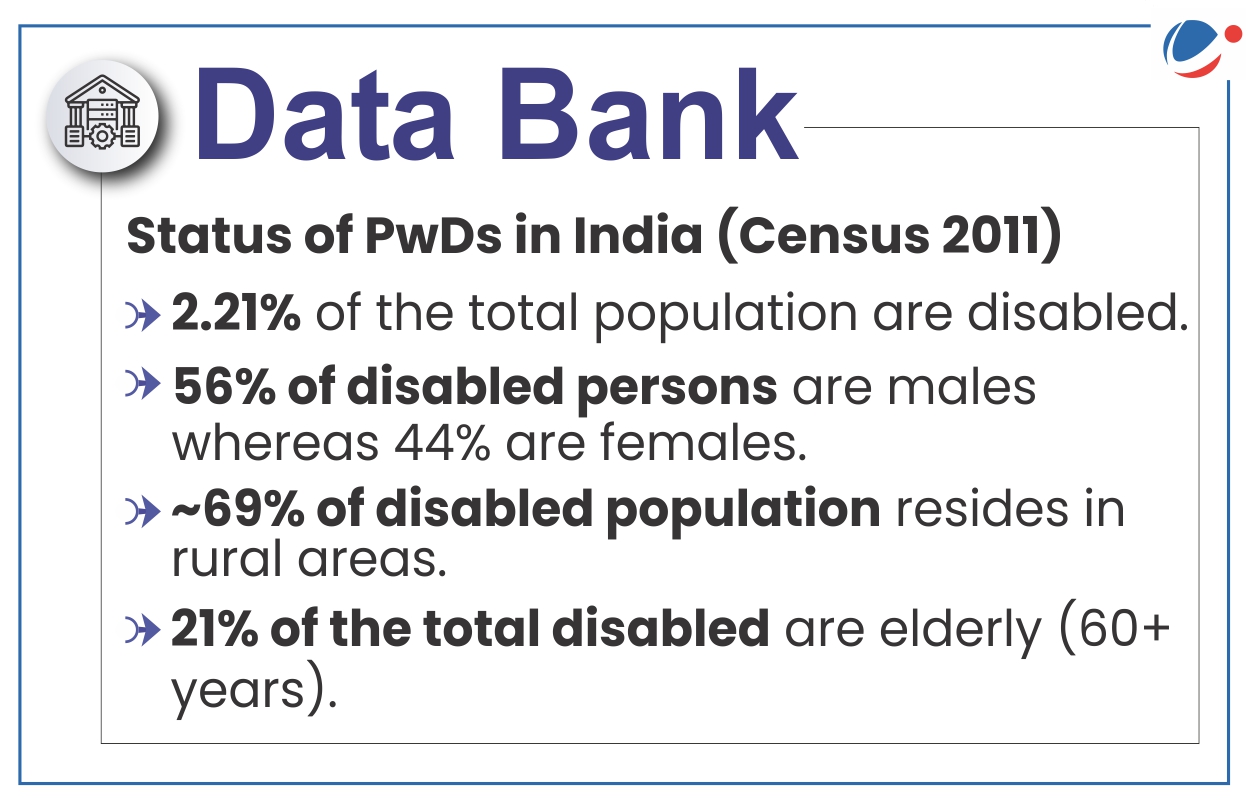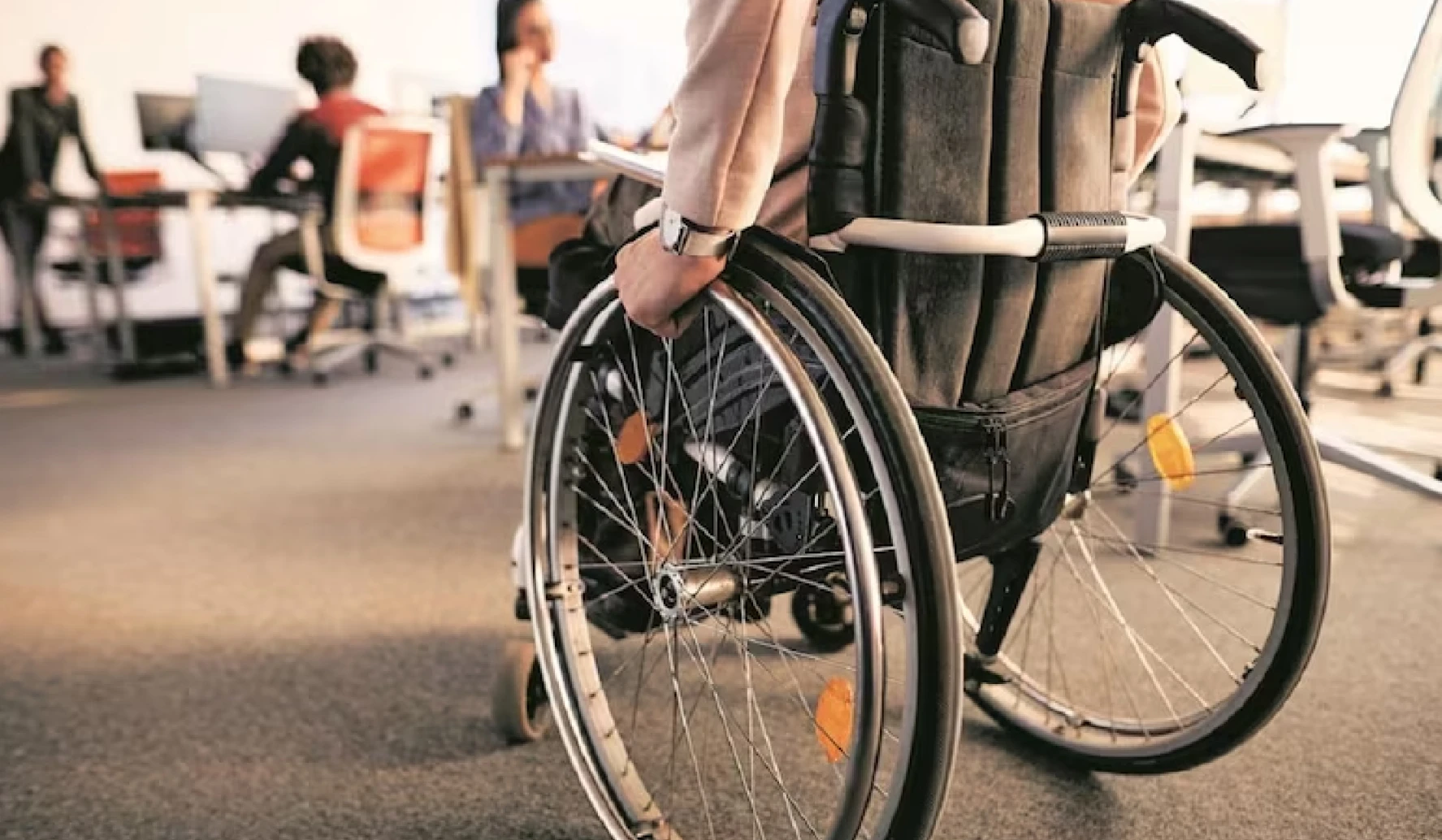Why in the News?
In Rajive Raturi vs Union of India & Ors, the Supreme Court directed the Centre to frame mandatory rules under the Rights of Persons with Disabilities (RPwD) Act, 2016 to ensure accessibility in public places and services.

Key highlights of the Judgment
- Background: The judgement is based on a report submitted by the Centre for Disability Studies, NALSAR University of Law and upholds the social model of disability.
- ̨The social model of disability focuses on social change for inclusion and equality of PwDs by removing social barriers preventing their full participation.
- Legislative Gap: Declared Rule 15(1) ultra vires to the RPWD Act and called for a single, enforceable accessibility framework aligned with the Act's legislative intent.
- Rule 15 deals with the accessibility to the establishment.
- Mandatory Accessibility Standards: Section 40 of the RPwD Act, 2016 requires mandatory accessibility standards to be framed within three months.
- Principles of accessibility: Universal Design, comprehensive inclusion across disabilities, integration of assistive technology and continuous consultation with stakeholders should be considered while carrying out the exercise.
- Two-pronged approach: Ensuring accessibility in existing institutions/activities and transforming new infrastructure and future initiatives.
Constitutional provisions safeguarding interests of Persons with DisabilitiesPreamble
Fundamental Rights
Directive Principles of State Policy
Responsibilities of Panchayats and Municipalities
|
Challenges faced by Persons with Disability
- Attitudinal barriers: It includes stereotyping, stigma, prejudice and discrimination hindering opportunities for social integration and perpetuating a cycle of exclusion and isolation.
- Social barriers: E.g., PwD are far less likely to be employed, educated or have sufficient income which prevents them from enjoying their rights
- Transportation barriers: Inaccessibility within the built environment, transport systems, and communication channels severely interferes with PwD to independently function in society (World Report on Disability)
- Physical barriers: These are structural obstacles mainly related to the design and construction of indoor and outdoor facilities that block mobility.
- Communication barriers: It is experienced by people who having disabilities related to hearing, speaking, reading, writing etc.
- Policy and programmatic barriers: E.g., inconvenient scheduling, lack of accessible equipment limits effective delivery of public healthcare programs.
Initiatives taken for welfare of Persons with Disability
- Rights of Persons with Disabilities (RPwD) Act, 2016: It has been enacted to give effect to the United Nations Convention on the Rights of Persons with Disabilities. Its features:
- Defines 'person with disability' as a person with long term physical, mental, intellectual or sensory impairment which hinders his/her full and effective participation in society equally with others
- It also defines "person with benchmark disability" as a person with not less than 40% of a specified disability.
- Recognition of disabilities: It recognizes 21 categories of disabilities
- Prohibits discrimination against persons with disabilities in all aspects of life, including employment, education, and healthcare.
- Defines 'person with disability' as a person with long term physical, mental, intellectual or sensory impairment which hinders his/her full and effective participation in society equally with others
- Establishment of Statutory Bodies
- Rehabilitation Council of India (RCI): Constituted under the RCI Act 1992, it regulates the training of professionals & promotes research.
- National Trust for the Welfare of Persons with Autism, Cerebral Palsy, Mental Retardation and Multiple Disabilities: To empower the full participation of PwD to live independently with dignity, equal rights and opportunities.
- Establishment of Central Public Sector Enterprises
- National Divyangjan Finance and Development Corporation: It promotes economic empowerment through skill training and self-employment ventures by extending loans
- Artificial Limbs Manufacturing Corporation of India (ALIMCO): ALIMCO is a Mini Ratna company formed under Section 8 of the Companies Act, 2013 that manufactures artificial aids and appliances.
- Accessible India Campaign (Sugamya Bharat Abhiyan): It aims to accelerate accessibility, creating awareness and sensitization for creation a universal barrier-free environment.
- It focuses on developing an accessible physical environment, transportation system and Information & communication ecosystem.
- National Policy for Persons with Disabilities, 2006: It outlines specific measures and strategies for ensuring protection of the rights of PwDs and their inclusion in society.
Steps to be taken
- Enable access to all mainstream policies, systems and services: All stakeholders should ensure equal participation of PwDs equally with others in any activity and service intended for the general public.
- Invest in specific programmes and services for people with disabilities: Greater investment is needed for rehabilitation, support services, training etc.
- E.g. Rehabilitation with assistive technologies such as wheelchairs, hearing aids, and white canes improves the functioning and independence of PwDs
- Participatory Approach: People with disabilities should be consulted and actively involved in formulating and implementing policies, laws, and services.
- Nothing about us, without us' principle should be followed to ensure inclusivity.
- Improve human resource capacity: Relevant training on disability, which incorporates human rights principles, should be integrated into current curricula and accreditation programmes.
- E.g., Availability of specialist staff contributes to effective and affordable health care for people with disabilities.
- Provide adequate funding and improve affordability: Adequate and sustainable funding of publicly provided services is needed to ensure that they reach all targeted beneficiaries.
- Increase public awareness and understanding of disability: Improvement in public understanding of disability to confront negative perceptions, and represent disability fairly can break the attitudinal and social barriers.
- E.g., Educational authorities should ensure that schools are inclusive and have an ethos of valuing diversity.
- Improve disability data collection: Better collection of data and its segregation based on age, sex, socio-economic status can help in better understanding of barriers.






